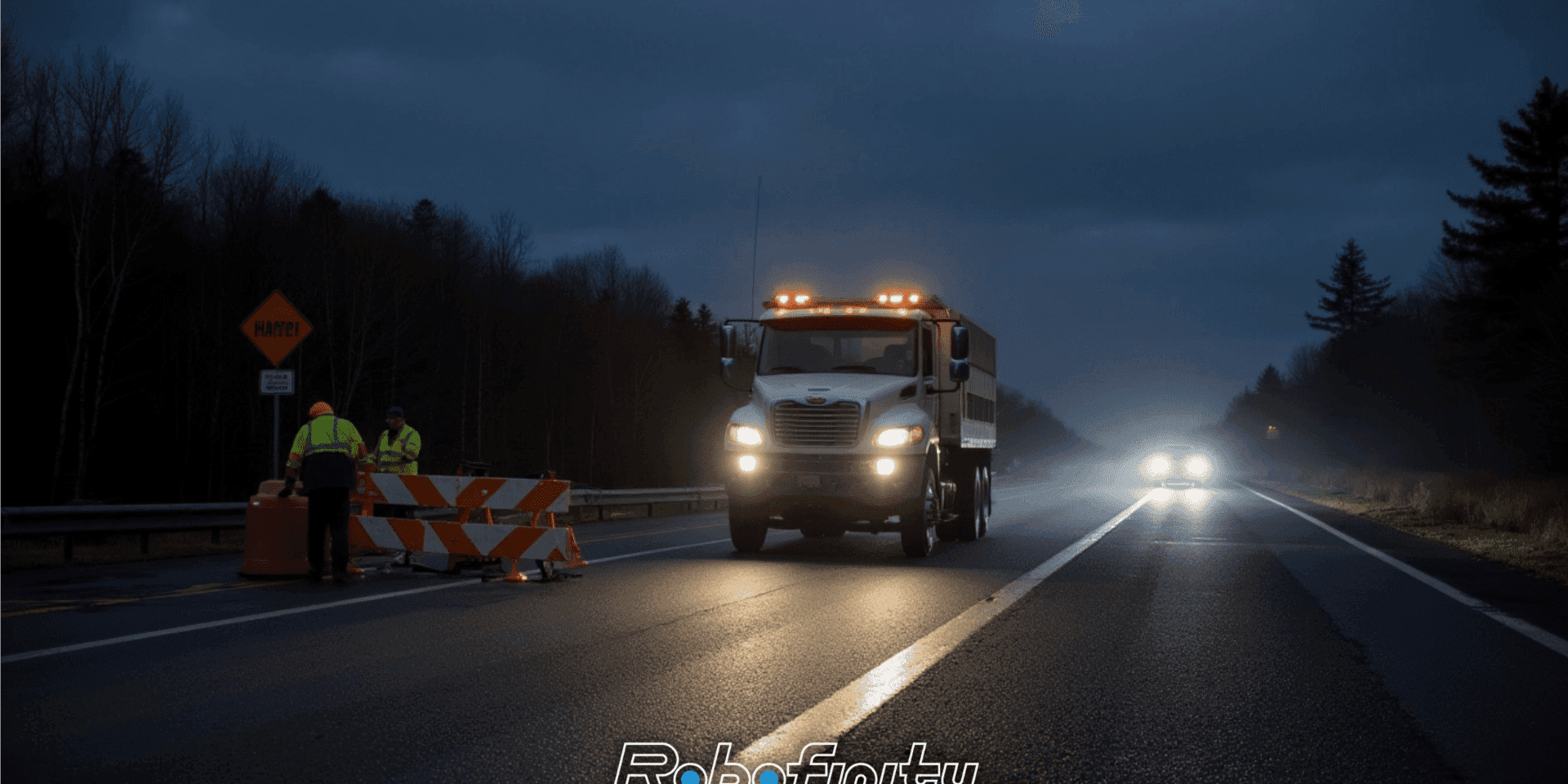In Nova Scotia, where fall brings steady rain, coastal fog, and early darkness, construction and road maintenance crews face some of the most hazardous working conditions in Canada.
From asphalt patching on Highway 102 to bridge repairs in Dartmouth and winter prep on the Cobequid Pass, these teams keep the province moving — often in conditions where visibility is dangerously low.
And the risks are real.
According to Nova Scotia’s Department of Public Works, over 40% of roadside incidents involving maintenance crews occur after dark, and a growing number happen during rain, fog, or low-light conditions — precisely when traditional warning systems fail.
So what happens when a driver can’t see a work zone until it’s too late?
The Hidden Dangers of Maritime Work Zones
Nova Scotia’s climate creates a perfect storm for visibility loss:
- Coastal fog reduces sightlines on major highways
- Rain-soaked roads reflect headlights, creating glare and blinding drivers
- Early darkness limits safe working hours
- Wet pavement increases braking distances by up to 50%
Even with cones, flashing lights, and reflective vests, workers are often invisible until a vehicle is just seconds away.
And here’s the hard truth:
At 90 km/h, a vehicle covers 25 meters per second.
With an average reaction time of 1.5 seconds, that’s 37.5 meters before braking begins.
In heavy rain or fog, visibility can drop to under 50 meters — meaning a driver may only see a work zone moments before impact.
That’s not safety. That’s a gamble.
⚠️ Why Traditional Safety Tools Are Failing
Most people assume that warning signs, cones, and high-vis gear are enough to protect roadside workers. But in real-world conditions, they’re not.
Here’s why:
- Fog and rain scatter light, reducing the effectiveness of flashing beacons
- Wet clothing and gear blend into dark backgrounds
- Driver fatigue and distraction increase at night
- Speeding through work zones remains a persistent issue
And for crews working on narrow, winding roads like those in Cape Breton or the Annapolis Valley, the risk is even greater.
The Solution: AI-Powered Thermal Imaging for Proactive Protection
The future of work zone safety isn’t brighter lights — it’s smarter awareness.
Enter Robofinity InsightDrive™, the first AI-powered thermal imaging system designed for vehicles. Unlike traditional lighting, InsightDrive™ detects heat signatures — allowing it to identify people, animals, and vehicles in total darkness, fog, or rain, up to 656 feet (200 meters) ahead.
This means:
- A maintenance crew can detect an approaching vehicle long before it enters the work zone
- A snowplow operator can spot a stranded motorist during a storm
- A road crew can avoid a moose or deer crossing a dark highway
And because InsightDrive™ works independently of visible light, it sees clearly through rain, fog, and smoke — conditions that blind most drivers.
✅ Real-World Impact on Nova Scotia Crews
Municipal and provincial road teams are already seeing results:
- Reduced near-misses on fog-prone highways
- Improved crew confidence during night operations
- Fewer collisions during emergency response
InsightDrive™ is compatible with most construction trucks, snowplows, and maintenance vehicles — and integrates seamlessly into daily operations.
The Bottom Line: Safety Shouldn’t Depend on the Weather
For Nova Scotia’s road crews — who keep Halifax, Sydney, Yarmouth, and beyond connected — safety should never be compromised by rain, fog, or fading light.
As fall turns to winter and darkness comes earlier, the need for intelligent, proactive visibility has never been greater.
Learn more about how InsightDrive™ supports construction and road maintenance
Request a business consultation for fleets and municipalities








